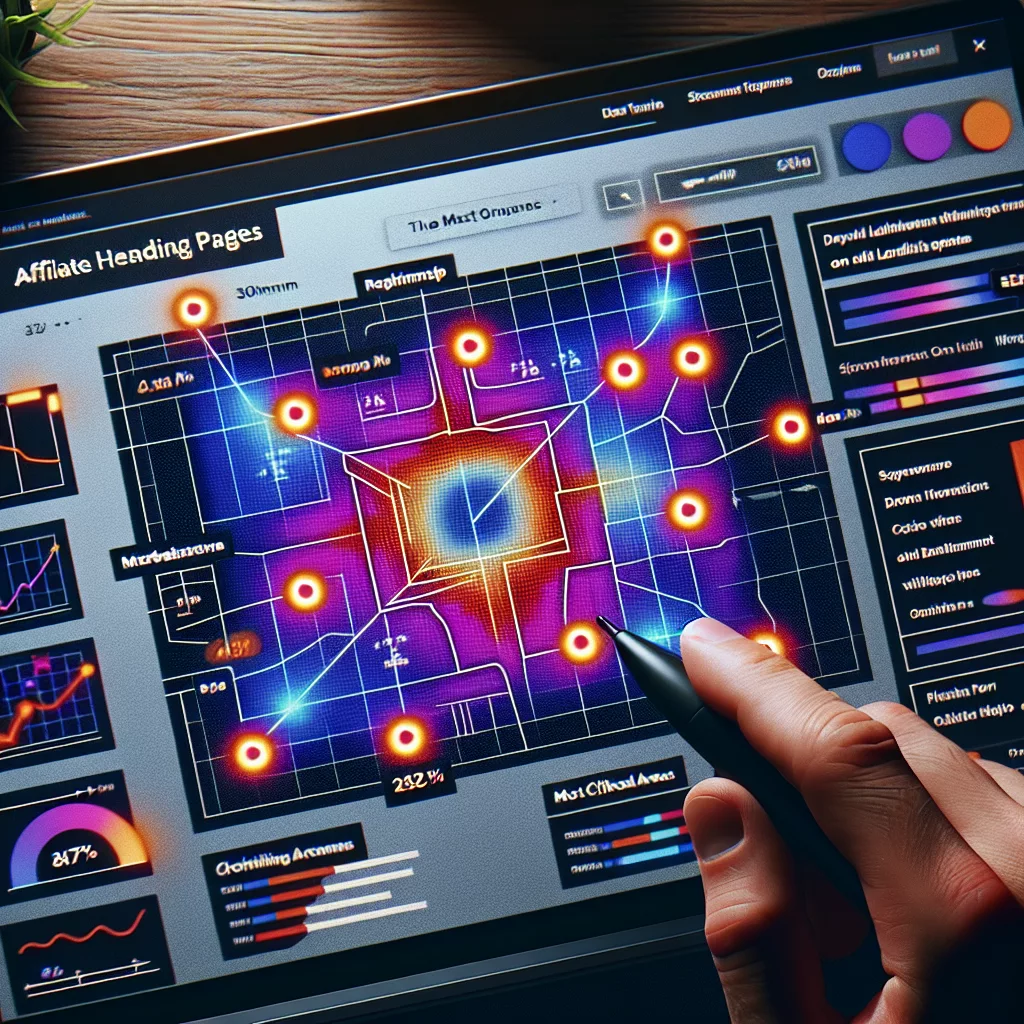Understanding Heatmaps and Their Importance
What Are Heatmaps?
Heatmaps are visual representations of data showing how users interact with your web pages. They use color coding to indicate levels of activity; for instance, red areas might represent where users click the most, while blue areas indicate less engagement. It’s one of those tools that make me feel like I have a superpower as it lets me see the real behavior of visitors on my affiliate landing pages.
From my experience, using heatmaps means I can go beyond traditional analytics. Instead of just seeing numbers and percentages, I’m able to visualize how people engage with my content, where their eyes land first, and what catches their interest. This insight is invaluable when trying to drive conversions.
I’ve found that different types of heatmaps serve distinct purposes. Click heatmaps show where users click. Scroll heatmaps reveal how far down they scroll. Attention heatmaps indicate where users are focusing their attention. So, understanding these tools gets you a step closer to optimizing your pages effectively.
Setting Up Heatmaps Correctly
Selecting the Right Tool
There are countless tools out there for generating heatmaps, but not all are created equal. My go-to tools include Crazy Egg and Hotjar. Both have unique features and offer generous free trials. Trying them out gives you a sense of which fits best with your specific traffic and goals.
When I first started using heatmaps, I went through a few different platforms before I found one that clicked—no pun intended. It’s crucial to choose a tool that not only suits your needs but also integrates with your existing analytics tools. You want everything working together seamlessly.
Make sure to check if they have good customer support or an extensive knowledge base. You might need help setting things up, and a responsive support team can make all the difference.
Analyzing Heatmap Data
Identifying User Behavior Trends
Once you’ve set up heatmaps, it’s time to dive into the data. I always start by identifying any clear trends in user behavior. Are they clicking on the call-to-action buttons as you’d expect? Are there parts of the page they seem to ignore completely? These insights guide my next steps.
Take a close look, and don’t just focus on what’s happening above the fold. I’ve seen many affiliate marketers get fixated on the top part of the page, but scrolling heatmaps often reveal that significant interactions happen further down. It’s about the whole picture.
Also, don’t hesitate to compare different landing pages. For instance, if you have various offers or layouts, seeing how users respond differently can help you refine your approach massively.
Implementing Changes Based on Insights
Refining Call-to-Action Elements
After analyzing heatmap data, it’s time to make strategic changes. One common area needing adjustments is the call-to-action (CTA) buttons. I’ve often found that tweaking the placement, color, or even the text can lead to a significant bump in conversions.
For example, if a button is blending into the background, changing its color to something more eye-catching can direct attention. The same goes for phrasing—sometimes, just changing “Submit” to “Get Your Free Trial” can alter user response rates dramatically.
Don’t forget to A/B test any modifications. Every time I modify something, I run tests to see how those changes perform compared to the original design. It’s the most effective way to ensure I’m moving in the right direction.
Continuous Optimization and Learning
Making Adjustments as Needed
Heatmaps are not just a set-it-and-forget-it tool; they require ongoing attention. I check my heatmap data regularly—not just when launching new pages but also to assess existing ones. User behavior can shift over time, and staying on top of those changes is key.
For instance, if a new trend arises, I want to make sure my landing pages are aligned with what users expect. Keeping everything fresh is crucial in the fast-paced world of affiliate marketing. Being proactive helps me stay one step ahead.
Additionally, keep experimenting. Don’t be afraid to try new layouts or offers based on what you see in your data. The beauty of marketing is that it’s a never-ending learning process, and adapting is crucial for success.
FAQ
1. What is the main purpose of using heatmaps for affiliate landing pages?
Heatmaps help visualize user interactions, showing where people are clicking, scrolling, and focusing their attention. This insight is crucial for optimizing the design and layout of affiliate landing pages to increase conversions.
2. Can I use heatmaps for any type of website?
Yes, heatmaps can be beneficial for any website, but they are especially useful for landing pages that aim to convert visitors into leads or sales. They allow for personalized optimization based on user behavior.
3. How often should I check my heatmap data?
I recommend checking your heatmap data regularly, especially after implementing changes to your landing pages. It’s also good to assess trends over longer periods, as user behavior can shift.
4. Should I rely solely on heatmap data for optimization decisions?
No, heatmap data is one piece of the puzzle. Combine it with other analytics tools, A/B testing results, and user feedback for a comprehensive understanding of your audience’s needs and behaviors.
5. How long does it take to see results from changes made based on heatmap data?
The timeframe can vary depending on traffic volume and changes made. Typically, I’ve noticed measurable results within a few weeks, especially if coupled with A/B testing and ongoing adjustments.
